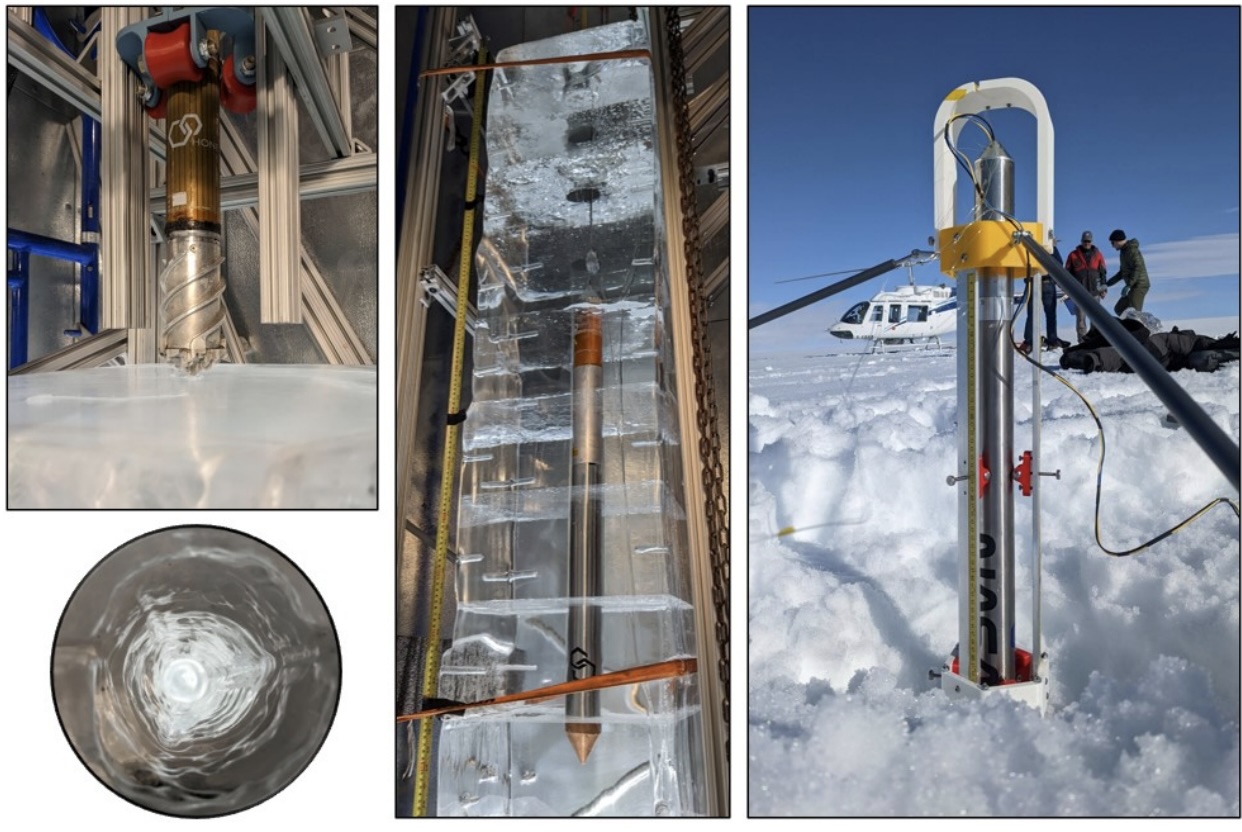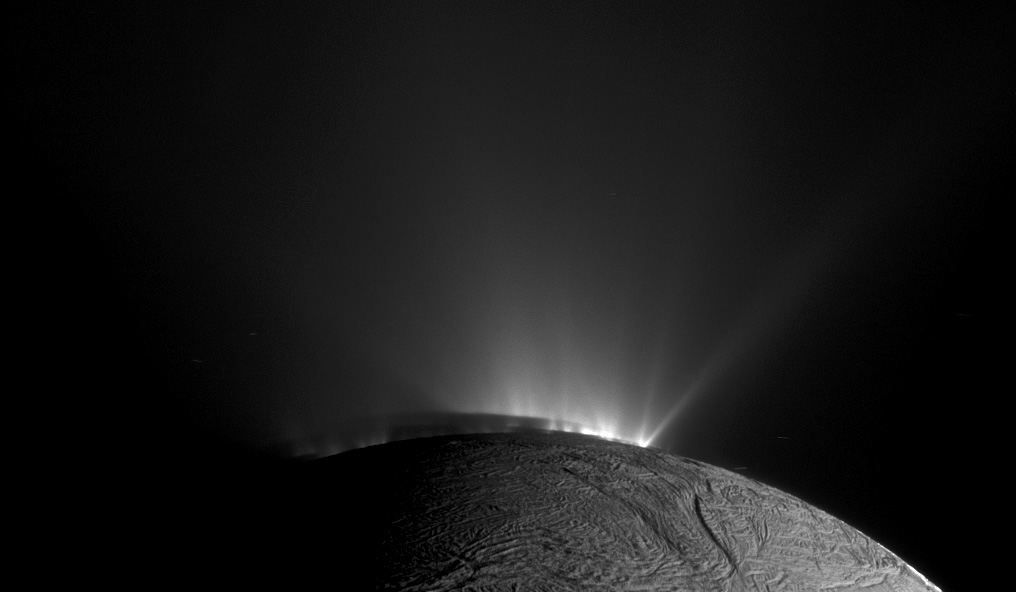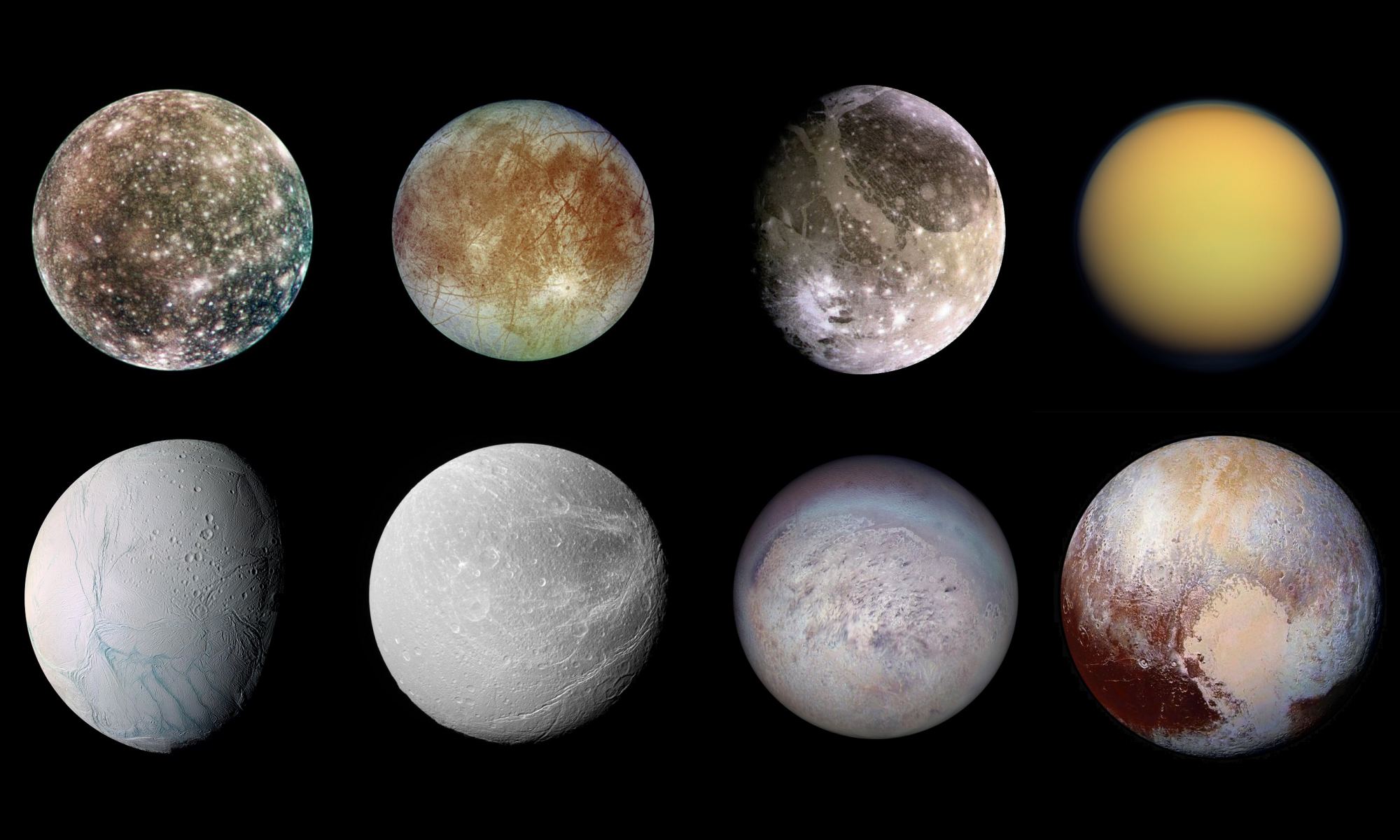When searching for alien life, it’s not unusual to use Earth as a test bed for theories and even practice runs. Perhaps one of the most tantalising places in the Solar System to look for life is Saturn’s moon Enceladus. It has a liquid water interior and it is here that life may just be possible. A team of researchers want to test techniques for searching for life on Enceledaus by exploring the oceans of Earth. They have collected water and ice samples and hope to find chemicals like methane and hydrogen.
Continue reading “Researchers Practice Searching for Life on Enceladus, in the Arctic Ocean”Could Comets have Delivered the Building Blocks of Life to “Ocean Worlds” like Europa, Enceladus, and Titan too?
Throughout Earth’s history, the planet’s surface has been regularly impacted by comets, meteors, and the occasional large asteroid. While these events were often destructive, sometimes to the point of triggering a mass extinction, they may have also played an important role in the emergence of life on Earth. This is especially true of the Hadean Era (ca. 4.1 to 3.8 billion years ago) and the Late Heavy Bombardment, when Earth and other planets in the inner Solar System were impacted by a disproportionately high number of asteroids and comets.
These impactors are thought to have been how water was delivered to the inner Solar System and possibly the building blocks of life. But what of the many icy bodies in the outer Solar System, the natural satellites that orbit gas giants and have liquid water oceans in their interiors (i.e., Europa, Enceladus, Titan, and others)? According to a recent study led by researchers from Johns Hopkins University, impact events on these “Ocean Worlds” could have significantly contributed to surface and subsurface chemistry that could have led to the emergence of life.
Continue reading “Could Comets have Delivered the Building Blocks of Life to “Ocean Worlds” like Europa, Enceladus, and Titan too?”Planetary Protection: Why study it? What can it teach us about finding life beyond Earth?
Universe Today has recently investigated a plethora of scientific disciplines, including impact craters, planetary surfaces, exoplanets, astrobiology, solar physics, comets, planetary atmospheres, planetary geophysics, cosmochemistry, meteorites, radio astronomy, extremophiles, organic chemistry, black holes, and cryovolcanism, while conveying their importance of how each of them continues to teach researchers and the public about our place in the vast universe.
Continue reading “Planetary Protection: Why study it? What can it teach us about finding life beyond Earth?”Cryovolcanism: Why study it? What can it teach us about finding life beyond Earth?

Universe Today has had the privilege of spending the last several months venturing into a multitude of scientific disciplines, including impact craters, planetary surfaces, exoplanets, astrobiology, solar physics, comets, planetary atmospheres, planetary geophysics, cosmochemistry, meteorites, radio astronomy, extremophiles, organic chemistry, and black holes, and their importance in helping teach scientists and the public about our place in the cosmos.
Continue reading “Cryovolcanism: Why study it? What can it teach us about finding life beyond Earth?”Testing a Probe that Could Drill into an Ice World

I remember reading about an audacious mission to endeavour to drill through the surface ice of Europa, drop in a submersible and explore the depths below. Now that concept may be taking a step closer to reality with researchers working on technology to do just that. Worlds like Europa are high on the list for exploration due to their potential to harbour life. If technology like the SLUSH probe (Search for Life Using Submersible Head) work then we are well on the way to realising that dream.
Continue reading “Testing a Probe that Could Drill into an Ice World”A Single Grain of Ice Could Hold Evidence of Life on Europa and Enceladus

The Solar System’s icy ocean moons are primary targets in our search for life. Missions to Europa and Enceladus will explore these moons from orbit, improving our understanding of them and their potential to support life. Both worlds emit plumes of water from their internal oceans, and the spacecraft sent to both worlds will examine those plumes and even sample them.
New research suggests that evidence of life in the moons’ oceans could be present in just a single grain of ice, and our spacecraft can detect it.
Continue reading “A Single Grain of Ice Could Hold Evidence of Life on Europa and Enceladus”What Can We Learn Flying Through the Plumes at Enceladus?

In the next decade, space agencies will expand the search for extraterrestrial life beyond Mars, where all of our astrobiology efforts are currently focused. This includes the ESA’s JUpiter ICy moon’s Explorer (JUICE) and NASA’s Europa Clipper, which will fly past Europa and Ganymede repeatedly to study their surfaces and interiors. There’s also NASA’s proposed Dragonfly mission that will fly to Titan and study its atmosphere, methane lakes, and the rich organic chemistry happening on its surface. But perhaps the most compelling destination is Enceladus and the lovely plumes emanating from its southern polar region.
Since the Cassini mission got a close-up look at these plumes, scientists have been aching to send a robotic mission there to sample them – which appear to have all the ingredients for life in them. This is not as easy as it sounds, and there’s no indication flying through plumes will yield intact samples. In a recent paper, researchers from the University of Kent examined how the velocity of a passing spacecraft (and the resulting shock of impact) could significantly affect its ability to sample water and ice within the plumes.
Continue reading “What Can We Learn Flying Through the Plumes at Enceladus?”How Warm Are the Oceans on the Icy Moons? The Ice Thickness Provides a Clue.

Scientists are discovering that more and more Solar System objects have warm oceans under icy shells. The moons Enceladus and Europa are the two most well-known, and others like Ganymede and Callisto probably have them too. Even the dwarf planet Ceres might have an ocean. But can any of them support life? That partly depends on the water temperature, which strongly influences the chemistry.
We’re likely to visit Europa in the coming years and find out for ourselves how warm its ocean is. Others on the list we may never visit. But we may not have to.
Continue reading “How Warm Are the Oceans on the Icy Moons? The Ice Thickness Provides a Clue.”Fly Slowly Through Enceladus' Plumes to Detect Life
Enceladus is blasting water into space from the jets at its southern pole. This makes it the ideal place to send a dedicated mission, flying the spacecraft through the plumes with life-detection instruments s. A new study suggests that a spacecraft must proceed carefully through the plumes, keeping its speed below 4.2 km/second (2,236 miles per hour). Using a specialized, custom-built aerosol impact spectrometer at these speeds will allow fragile amino acids to be captured by the spacecraft’s sample collector. Any faster, they’ll shatter, providing inclusive results.
Continue reading “Fly Slowly Through Enceladus' Plumes to Detect Life”Europa and Enceladus are the Perfect Targets for a Lightsail Mission

There’s always a need for new technologies or for novel uses of existing technologies to lower the cost of space exploration and extend our reach. Lightsails are a novel type of spacecraft that could eventually be our first visitors to nearby stars like the Alpha Centauri system. But they could be put to productive use right here in our Solar System.
Continue reading “Europa and Enceladus are the Perfect Targets for a Lightsail Mission”



